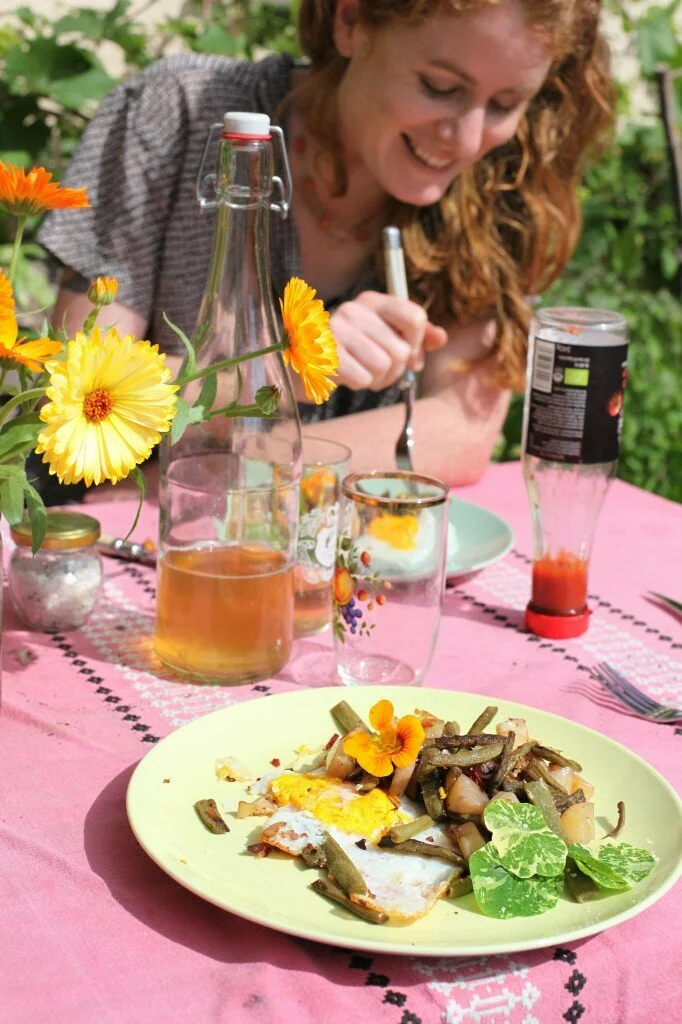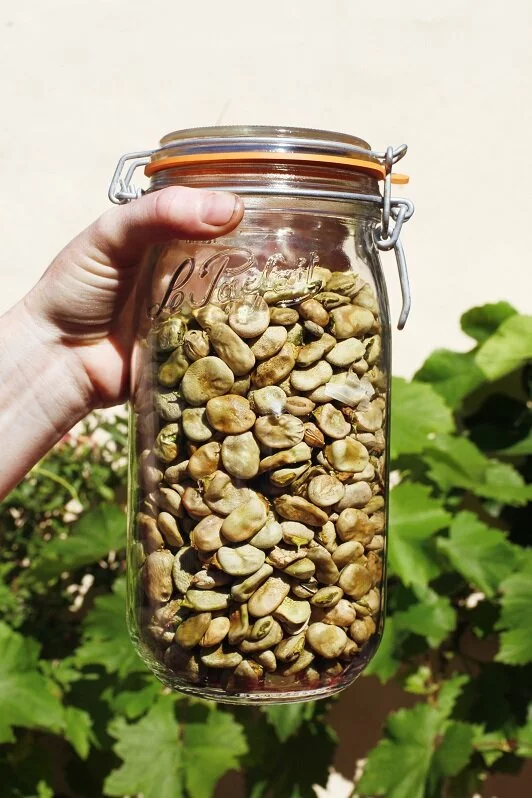a book review
Bowls of strawberries and heaps of gooseberries are a familiar sight in my kitchen at the moment. My courgettes and crimson flowered broad beans are loving the amazingly long-lasting sunny spell and even the runner beans are now snaking up their rustic wigwams vigorously. Very different to last summer when it was mainly mud that I brought in from garden to kitchen. Happily it seems an apt time to review a book called ‘Abundance.’
I’m already a big fan of Alys Fowler’s writing and broadcasting about growing your own foodie treats and making the most of our wild larder. Her lovely book ‘The Edible Garden’ (subtitled How to have your garden and eat it) is one of my favourite places to turn to for inspiration when I’m planning planting in the midst of winter. I’m very partial to planting calendula and cavolo nero together in the garden, the majestic dark green leaves looking splendid against the vivid orange flowers and I have the beautiful photos of calendula and cavolo nero in Alys’ own garden to thank for this idea.
In her recently published book, ‘Abundance’ she writes about how to make the most of gluts from the land to enable you to still eat well in the leaner winter months.Including classics such as Raspberry Jam and apple sauce, Alys also offers unusual ways to preserve your harvests, with some fascinating facts on how different cultures have developed their own techniques for pickling, fermenting and drying and interesting nutritional information.
Torshi Lift-Pickled turnips and Powidla (Polish Plum butter) may sound exotic but the recipes suggest they’re an easy way to both preserve and add an exotic glamour to home-grown produce. Gorgeous photos (and my own memories of pickling turnips with beetroot) reminds me that the turnip recipe is a glorious bright pink colour too. While Kale crisps look like a delicious way of persuading fussy young eaters to eat their greens – and maybe the cavolo nero that I’m so partial to could be used here?
Similarly to Diana Henry in ‘Salt Sugar Smoke’ Alys reminds us of the satisfying feeling that a store-cupboard full of preserves can give us:
“We store up a lot more than ripeness when we store away our produce; we store up a summer of hard, enjoyable work. If done well, we take all those vitamins and minerals, all that well-nourished soil and health and offer it up to those we love when the garden has all but gone to bed.”
All good reasons to freeze a few bags of the wild strawberries that are hanging down enticingly below my lavender (as Alys points out it’s almost impossible to collect enough tiny wild strawberries in one go to make jam, but you can freeze batches until you have enough) to make the lovely Wild Strawberry Jam. Not that I need another reason after reading Alys’ enticing instructions:
“This jam will not set well. Run with its sloppiness and spoon into Greek yoghurt or let it race across butter.”
As both a gardener (she trained at the Royal Horticultural Society, the New York Botanical Gardens and the Royal Botanic Gardens at Kew before working as Head Gardener, then presenter for BBC’s Gardeners’ World) and inspirational cook, Alys imparts some excellent gardening advice in ‘Abundance’ before dealing with harvesting, storing and preserving. It’s interesting to read just how important getting the soil right is to preserving its fruits. Alys points out that too much nitrogen (often favoured by large-scale farmers aiming at quick, bountiful harvests for the supermarkets) can affect the plant’s metabolic rate and although this aids fast growth, it also ages the fruit faster:
“Conversely, an abundance of potash (potassium) in the soil has a positive effect on storage.”
So when we add potassium-rich comfrey, seaweed, green manures and animal manures to our plots, it’s nice to know we’re already benefitting the winter larder.
I like the sound of the health benefits for our winter stomachs too. In the ‘On Fermenting’ chapter, Alys describes delicious ways for using the sour, salty taste of pickles made this way and explains that fermented foods, “..are hugely important to our health, containing a unique mixture of good bacteria and vitamins.” Reminding me of some of the lovely sauerkraut type fermented cabbage recipe that I want to try in the lovely Dale Cottage Farm Diaries.
A good reason too to try Kimchi, an ancient pickle thought to originate in China. A way of preserving different winter vegetables using salt, Alys refers to a Korean study which has found that the good bacteria in kimchi can kill off bad bacteria such as salmonella. As I line up my kilner jars and admire the flowers on my pickling cucumbers, I like to think this means that pickling truly is good for you.
Abundance by Alys Fowler (Kyle Books, £16.99) Photography: Simon Wheeler.




For jam it’s always good to “run with its sloppiness”, I think! Taste over set any time. ‘Abundance’ sounds like my kind of book.
Totally agree, have been spooning my very sloppy strawberry jam over my toast this week, very messy but I can put up with that.
I love broad beans – I hadn’t realised you could dry them
I love broad beans too and to be honest, have never had enough spare to dry them so far – they always get scoffed. I’ve used dried ones in a lovely soup from one of the Moro books though so have great hopes of having enough to dry one year.
Hard to justify this book with no garden but very tempted. Of course pickles are good for you. Well I hope so given the amount my family consume
Good to hear that pickles are consumed liberally in your house too. The recipes would be great for seasonal gluts from the market as well as the garden.
Looks like this is another book to add to ‘the list’! I use The Edible Garden regularly – so if this is half as good it will be worth reading.
There are lots of good ideas in it that I reckon would make excellent use of all your lovely home-grown veggies and herbs.
That sounds like a brilliant book, definitely on my wish list! I like the idea of kimchi but haven’t tried it out yet. I’ve just done fermented beetroot and gherkins, looking forward to seeing how they turn out! Thanks for the mention xx
Fermented beetroot and gherkins sound interesting! I’ve got lots of beetroot in the garden at moment so keen to hear more about this. Also been growing some cucumbers that are good gherkin size in a friends greenhouse purely because I fancied pickling them.
We adore soft set jams, and I love the sound of any book which encourages a laid back approach rather than a rigid one! I must admit though that the traditional method of burying kimchi in the ground to ferment it terrifies me a bit! Thanks for the review, I’ll look out for this one!
Thanks for the review, I’ll look out for this one!
Thanks Celia and have to admit, fermenting food in the ground is a bit hard core, my family are already suspicious of some of the concoctions I have lurking in the kitchen!
Ms Fowler certainly has a way with words, doesn’t she? I love books like that, that make you try things and see the world differently. Your post gives me the urge to be a bit more adventurous with my garden produce…
Yes, I love her books, as you say a joy to read while being full of inspirational growing and eating ideas.
I think I need this book in my life. Great idea about the wild strawberries. What a lovely garden picture too.
The wild strawberry idea is good isn’t it – although I have to admit that although I had good intentions when I wrote this, I’m not saving too many, they’re too tempting to graze on whenever I pass them in the garden!